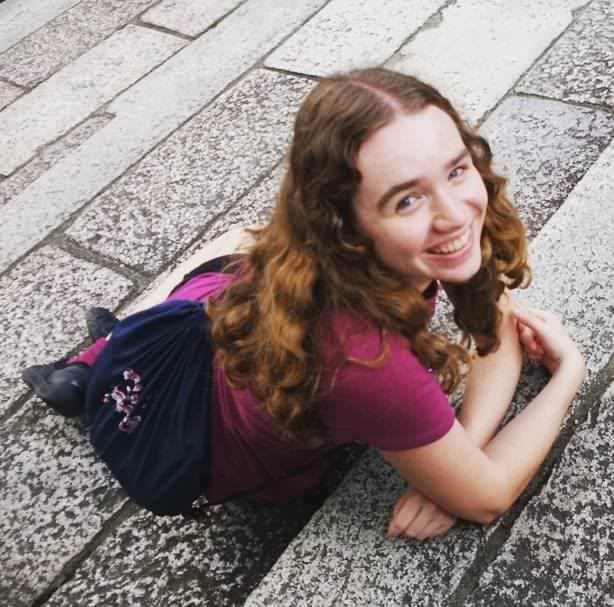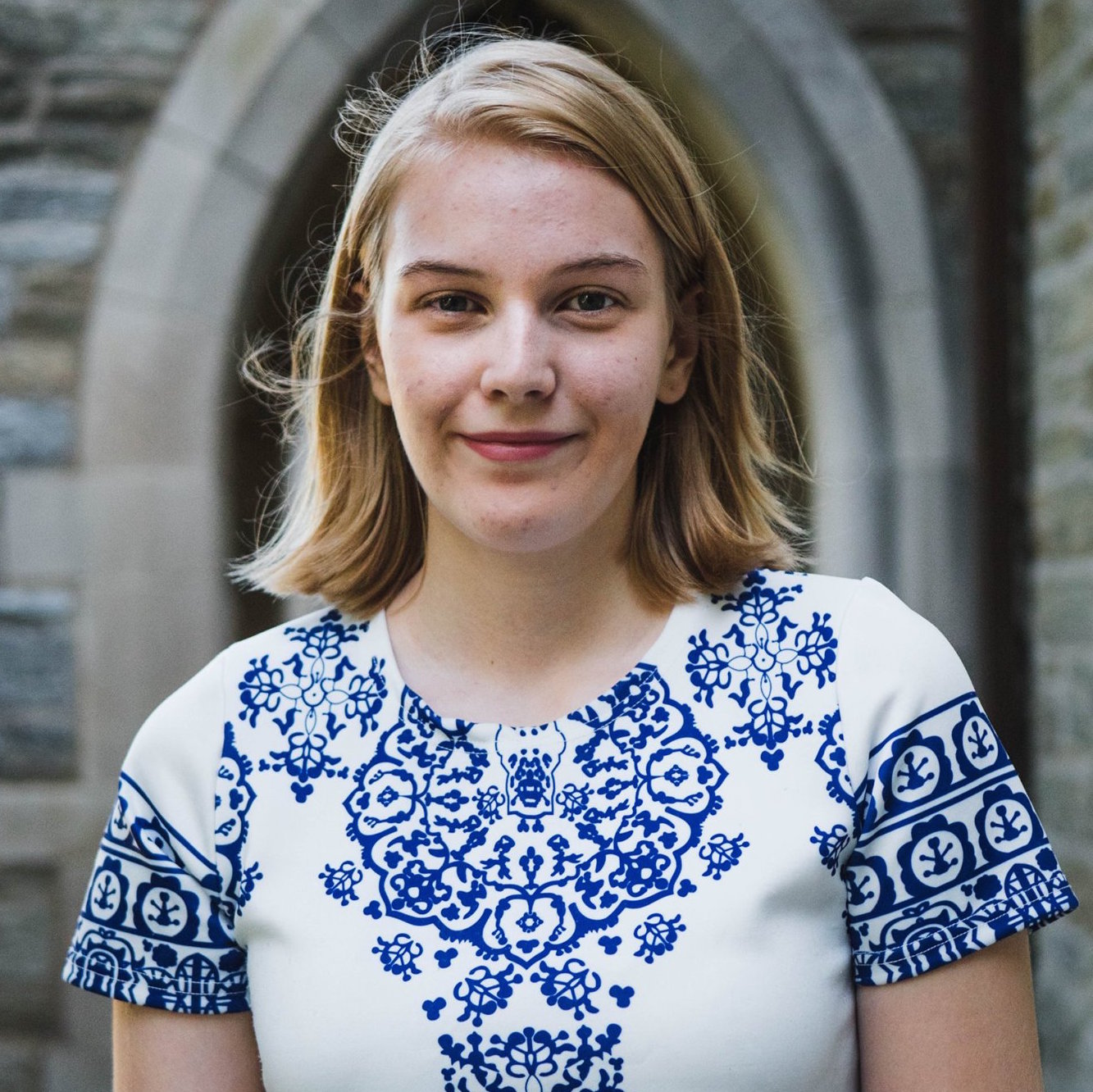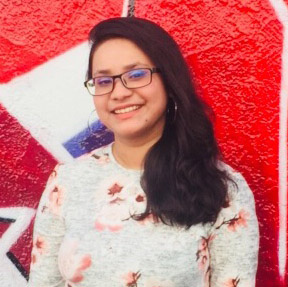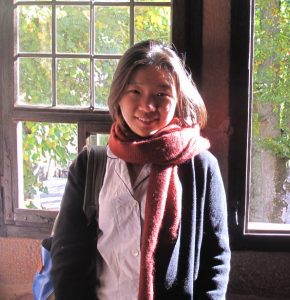
3D Rendering of the Advanced Biology Lab
Welcome to the Bryn Mawr Women in Science project. This project began at Bryn Mawr College in October 2017 under the direction of Dr. Jessica C. Linker. The idea grew out of her doctoral work on the history of early American women and their scientific practices, as well as Dr. Linker's desire to use 3D technology for pedagogical ends. She began teaching herself how to use Unity 3D in August 2017, and then went on to teach undergraduate students about how 3D modeling and spaces could be used to curate stories about women in science. This project, which is a collaborative effort between Dr. Linker and the students who helped make it, attempts to visualize and contextualize where Bryn Mawr women worked.
Historians often engage in reconstructive work to think about women in science because documentary evidence for women's scientific work is not as robust as what exists for men. There are numerous complicated reasons for this. When women have been included in scientfic networks, gender hierarchies and cultural expectations mediated the value and visibility of their labor. Archival practices often favored preserving men's manuscripts, making relevant material difficult to locate. In light of this, one way we might think about the scientific lives of women is by reconstructing the spaces they occupied. Space can help us to contextualize the tools women used, the processes they mastered, and their lived experiences. To this end, the team used various digital tools to construct interactive 3D models of two laboratories that once existed at Bryn Mawr College: the Major Chemistry Lab and the Advanced Biology Lab in Dalton Hall. Both are depicted circa 1900.

While Dr. Linker thought up this project, it runs on exceptional undergraduate students (Elia Anagnostou, Courtney Dalton, Jocelyn Dunkley, Tanjuma Haque, Arianna Li, Linda Zhu), who through their varied interests and willingness to integrate history, STEM, digital scholarship, art, architecture, and design (among other intellectual/creative pursuits) managed to exceed her expectations. Undergraduates working on this project were compensated for their labor and participated in professional opportunities. A number of equally brilliant graduate students (Stella Fritzell, Rachel Starry, Matt Jameson) produced content for the site, or provided the undergraduates with additional training or supervision. A profile of the project team follows this introduction.
Most models were created in SketchUp, an architectual modeling program, and based on primary research the students conducted in Bryn Mawr Special Collections. The interactive laboratories were assembled and coded in Unity 3D, a game engine. The students also helped to design the website, learning markup and other related skills. Each student was encouraged to engage in all parts of the process: the research, the writing, the modeling, and the coding. Dr. Linker thinks that the process of getting students to create this kind of project is just as important, if not more so, than the end result. The undergraduate team learned a lot about material culture, research and archives, and historical interpretation as they built the site. To produce 3D models, students had to really think about how to represent them -- a single document, including extant photographs, never told us all we needed to know. The students needed to identify and compare resources to make the historical decisions necessary for completing the interactive content.

Elia Anagnostou (BMC '21) is a Computer Science major. She began working on the project in June 2018 as a Digital Scholarship Summer Fellow. She continued to work on the project as a Digital Scholarship Research Assistant during the 2018-19 academic year. She was attracted to Digital Scholarship by the opportunity to expand her creative horizons and technical skill set. She also liked the idea of being exposed to academic research in fields like History (which sparked her interest, but remained outside of her comfort zone before coming to Digital Scholarship). She hopes to use her 3D technology skills to explore virtual reality and artificial intelligence.

Courtney Dalton (BMC '19) was a Linguistics major and Chinese minor. She was a Digital Scholarship Research Assistant for the 2017-18 academic year and was Digital Scholarship Winter Intern over 2018 winter break. She was also a Digital Scholarship Research Assistant during the 2018-19 academic year. She recently graduated summa cum laude and hopes to attend library school. She enjoys learning new technologies and digital tools of all kinds, especially those that can be applied to the study of language.

Jocelyn Dunkley (BMC '20) is majoring in Comptuer Science and German. She was a Digital Scholarship Research Assistant for the 2017-18 academic year and was a Digital Scholarship Winter Intern over the 2018 winter break. She was also a Digital Scholarship Research Assistant for the Spring 2019 semester. In her future career she hopes to be able to combine her STEM skills and her interest in humanities. Through her work in Digital Scholarship, she hopes to learn more about 3D technologies and improve her historical research skills. Jocelyn is working as an intern in a Human-Computer Interaction lab in Germany for summer 2019.

Stella Fritzell was the Assistant Director of the Digital Scholarship Summer Fellows Program in 2018. She is currently pursuing her M.A. in Greek, Latin & Classical Studies at Bryn Mawr. She received her B.A. in Classical Studies and Music in 2015 from Carleton College. Her research interests broadly include: mythology, religion, and performance, and she is currently working on a project examining the agonistic contexts of the Greek heroine Atalanta. Stella views digital scholarship as an essential tool for establishing both new means of accessing traditional fields of scholarship and new methodologies of teaching and learning in the classroom.

Tanjuma Haque (BMC '21) is a Computer Science major with a concentration in Middle Eastern Studies. She started working on this project as a Digital Scholarship Summer Resaerch Fellow in 2018 and continued working on the project as a Digital Scholarship Research Assistant for the 2018-19 academic year. She was a Customs person, a Help Desk Student Technician, an Interlibrary Loan Assistant and the marketing chair for Muslim Students’ Association. She hopes to use the digital skills she gains from experiences like the Digital Scholarship Summer Fellowship, for the betterment of developing economies and to encourage education.

Arianna Li (BMC '19) was a double major in History and French; her two senior theses won awards at Bryn Mawr and Haverford. She started working on this project as a Digital Scholarship Summer Research Fellow in 2018. She believes that digital scholarship sheds new lights on examining and presenting historical evidence by combining historical research and 3D technologies. In her future career, she wishes to improve and apply these skills to legal studies.

Jessica C. Linker, Ph.D. directed this project while she was the CLIR Humanities and Digital Scholarship Postdoctoral Fellow at Bryn Mawr College. She is now a Visiting Assistant Professor at Bryn Mawr. Her doctoral work examined the history of women's scientific practice in early America. She has a background in computer science dating back to her time at Wellesley College, and has participated in a number of digital projects and initiatives.

Rachel Starry, Ph.D. worked on this project while a doctoral student in Classical and Near Eastern Archaelogy at Bryn Mawr College. She created an application using R to visualize Bryn Mawr science majors and careers; you can find this application in the menu. She is the current CLIR Postdoctoral Fellow in Data Curation for the Social Sciences at the University of Buffalo. She earned her BA in Classical Civilization in 2011 from the University of Richmond, and she received her MA from Bryn Mawr College in 2013.

Linda Zhu (BMC '20) is a Computer Science major who is minoring in Geology. She began working on this project as a Digital Scholarship Research Assistant for the 2017-18 academic year. She was also a Digital Scholarship Summer Fellow for 2018, and a Digital Scholarship Research Assistant for the 2018-19 academic year. She is interested in interdisciplinary visual literacy using digital approaches. Linda is fascinated by how digital skills and technology are actively incorporated into more non-science fields — humanities, social work and art. She wants to strengthen her digital competency in experiential learning processes with critical awareness, while raising voice for minority women in science fields.
We would like to thank several people, departments, and institutions for their help with this project.
This project was sponsored by Digital Scholarship in Bryn Mawr LITS, for which we must thank Alicia Peaker. Bryn Mawr Special Collections and its staff helped us to locate and process information related to the history of women in science at Bryn Mawr. Joseph Marra at Bryn Mawr Facilities made himself available to show the team blueprints and other relevant documents. He also provided resources, including a lengthy report by Dr. Emily Cooperman, that was helpful in thinking about Dalton Hall. The Council on Libraries and Information Resources (CLIR) and members of the 2017-19 CLIR cohort must be thanked for helping Dr. Linker think through pedagogical issues related to 3D and virtual reality. Ben Gorham was the team's ILiADS liaison for 2018; ILiADS proved to be a fruitful experience for the 2018 Digital Scholarship Summer Fellows. Matt Jameson, a Ph.D. student at Bryn Mawr College, taught the undergraduate students photogrammetry and assisted them throughout the process of building photogrammetry models. The Library Company of Philadelphia allowed us to teach the students on-site during a summer field trip to that archive. Thanks is owed to Ann McShane in particular for facilitating our being there. Professor Greg Davis shared his knowledge of Nettie Stevens with us. The History Department at Bryn Mawr College have been excellent colleagues. We appreciate all of the scholars, students, and librarians who gave us feedback at the Bucknell Digital Scholarship Conference, the American Philosophical Society, and Wellesley College. Anyone who was not explicitly thanked here is still greatly appreciated; any omissions are not intentional and are due to Dr. Linker's forgetfulness alone.
The students made nearly all of models by hand -- microscopes, glassware, magic lanterns, furniture, lighting, architectural models, etc. -- but third party assets were used sparingly and selectively, usually when the object was complex and was not available locally for photogrammetry capture. All of these assets were free and licensed for educational use at the time of download. These included Vis Games's "Books" package from the Unity Asset Store. The students altered biological/taxidermy models produced by The Idaho Virtualization Laboratory (SketchFab Repository) and the California Academy of Sciences (SketchFab Repository). If we have been remiss in crediting anything, please feel free to contact us.